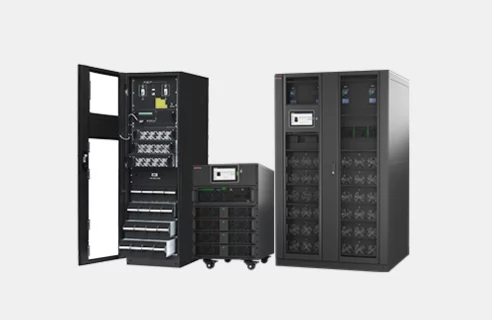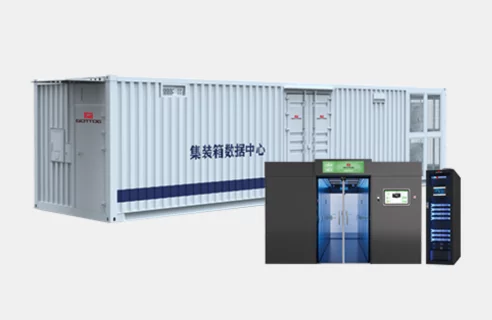The rapid advancement of artificial intelligence, particularly in large-scale deep learning models, has fundamentally altered the technological landscape. What began as algorithmic innovation has evolved into a resource-intensive competition where computational capacity increasingly determines technological leadership. This shift has elevated specialized AI data centers from supporting infrastructure to central elements in national and corporate strategies, creating new dependencies and reshaping global technological relationships.
Technical Foundations of Strategic Compute
AI data centers differ fundamentally from traditional computing facilities in their architectural requirements and operational characteristics. The training of modern foundation models demands unprecedented levels of parallel processing, supported by thousands of interconnected high-performance accelerators. This creates unique challenges in power distribution, thermal management, and network architecture that transcend conventional data center design paradigms.
The computational density required for efficient model training necessitates power delivery systems capable of supporting 30-50 kilowatts per rack, with some advanced implementations exceeding these thresholds. This power concentration generates thermal loads that conventional air cooling cannot effectively manage, driving adoption of direct-to-chip and immersion cooling technologies. These technical requirements create significant barriers to entry, as they demand specialized expertise and substantial capital investment.
Network architecture represents another critical differentiator. The performance of large-scale training clusters depends on high-bandwidth, low-latency interconnects that maintain synchronization across thousands of processors. The choice between specialized technologies and enhanced Ethernet implementations involves trade-offs between performance, cost, and operational complexity that directly impact computational efficiency.
Geopolitical Dimensions of Compute Capacity
The strategic importance of advanced computing infrastructure has prompted reassessments of technological sovereignty and supply chain security. Nations recognize that dependence on external compute capacity creates vulnerabilities in both economic and security domains, leading to policies aimed at fostering domestic capabilities.
Recent initiatives demonstrate this strategic recalibration. The concentration of advanced semiconductor manufacturing in specific geographic regions has prompted various responses, including incentives for domestic production capacity and restrictions on technology transfers. These measures reflect growing recognition that compute capacity represents both an economic advantage and potential point of contention in international relations.
The emergence of compute sovereignty as a policy objective illustrates how infrastructure has become intertwined with national strategy. Several nations have implemented comprehensive programs to develop indigenous capabilities across the compute stack, from semiconductor manufacturing to cloud infrastructure. These efforts represent long-term commitments to reducing strategic dependencies in an increasingly competitive technological environment.
Energy and Sustainability Constraints
The exponential growth in computational requirements confronts physical limits in energy availability and environmental impact. Large-scale AI training clusters consume power at scales comparable to substantial industrial facilities, creating dependencies on reliable electricity generation and transmission infrastructure.
The location decisions for new AI data centers increasingly reflect energy considerations, with proximity to generation capacity and cooling resources becoming determining factors. This geographical dimension adds another layer to the strategic calculus, as regions with abundant, reliable, and cost-effective energy sources gain importance in the global compute landscape.
Environmental considerations similarly influence the development of compute infrastructure. The computational demands of advanced AI systems have sparked critical examination of their energy intensity and carbon footprint. Responses include commitments to powering operations with renewable sources and developing more energy-efficient computing architectures, though these efforts face challenges of scale and implementation timing.
Economic and Security Implications
The concentration of advanced compute capacity creates new dynamics in economic competition and security planning. The ability to train increasingly sophisticated models provides advantages across numerous sectors, from pharmaceutical development to materials science, creating potential for significant economic redistribution.
Security considerations extend beyond traditional cybersecurity to encompass supply chain integrity and infrastructure resilience. The specialized nature of AI accelerators and their manufacturing processes creates potential vulnerabilities that have attracted attention from defense and intelligence communities. This has led to enhanced scrutiny of investments and technology transfers in the compute sector.
The interplay between commercial and national interests creates complex policy challenges. Restrictions on compute-related exports and investments reflect attempts to balance economic opportunity with security concerns, though these measures often have unintended consequences and provoke responses from affected parties.
Future Trajectories and Strategic Considerations
The evolution of compute technology suggests several potential future developments. The increasing specialization of AI accelerators promises continued performance improvements, though these may face diminishing returns without architectural innovations. Similarly, advances in cooling and power distribution could alter the economics of large-scale compute deployment.
The geographical distribution of compute capacity appears likely to evolve in response to both technical and political factors. Energy availability, environmental regulations, and strategic considerations may drive greater diversification in some regions while reinforcing concentrations in others. This distribution will influence patterns of technological development and international collaboration.
The long-term strategic landscape will likely feature continued competition intertwined with necessary cooperation on standards, safety, and sustainability. The global nature of both AI research and climate challenges creates imperatives for coordination even amid strategic rivalry.
Заключение
Advanced compute infrastructure has emerged as a determining factor in technological competitiveness, with implications extending across economic, security, and geopolitical domains. The specialized requirements of AI systems have transformed data centers from generic infrastructure to strategically significant assets, influencing international relationships and national policy priorities.
The continued evolution of this landscape will reflect both technical progress and strategic choices by multiple stakeholders. Understanding the complex interactions between computational requirements, energy constraints, and geopolitical dynamics remains essential for navigating the emerging technological order, where computational capacity increasingly correlates with strategic influence.







